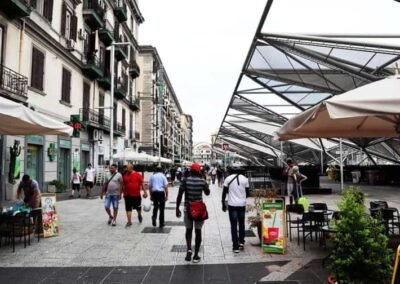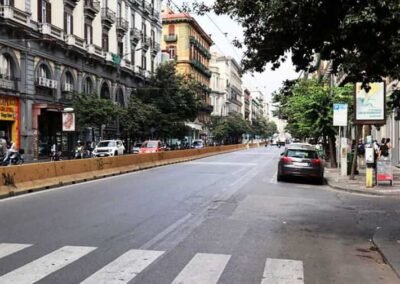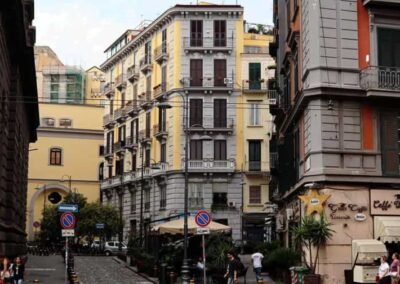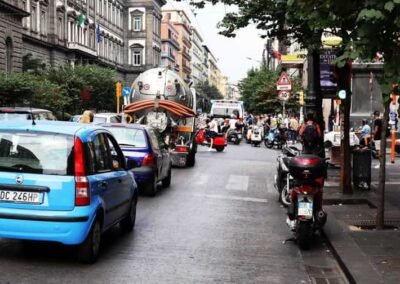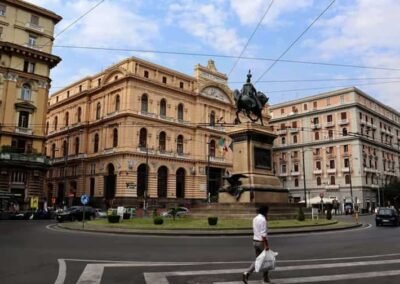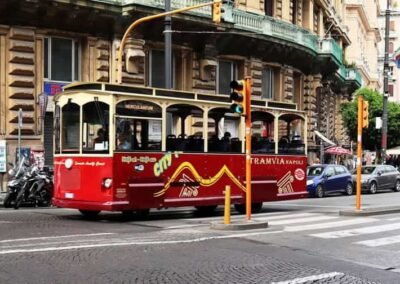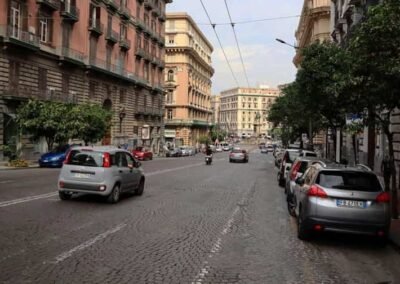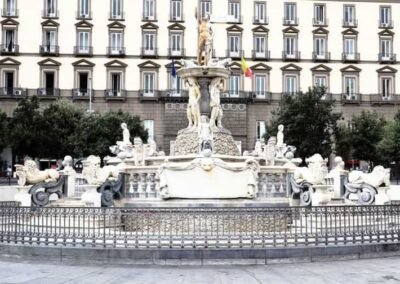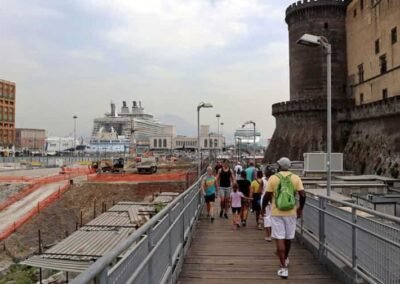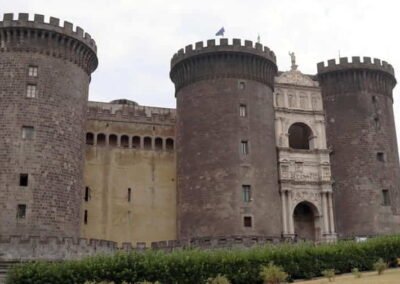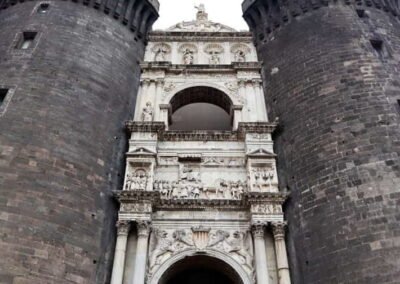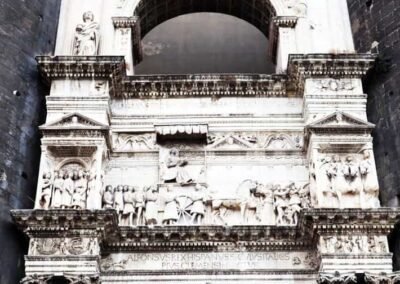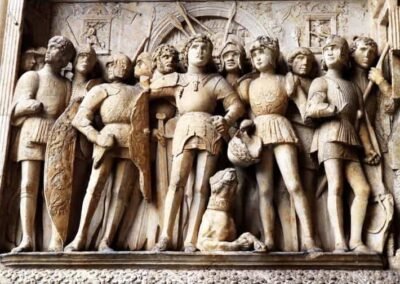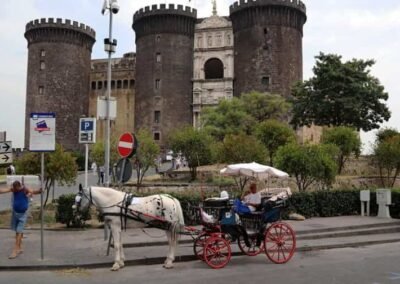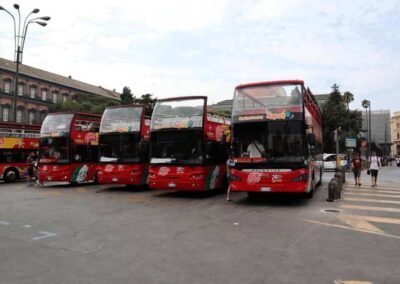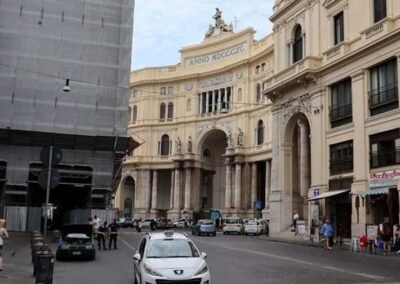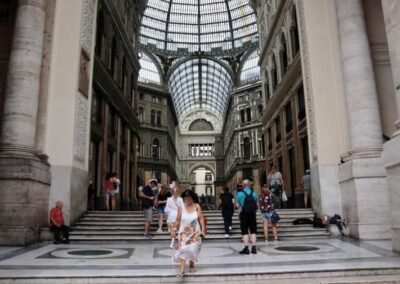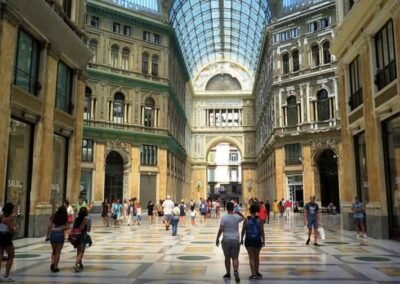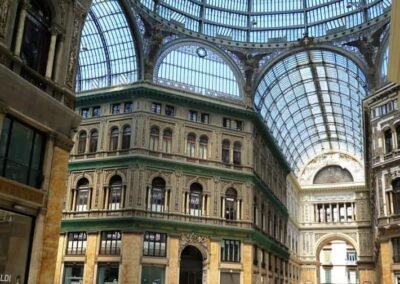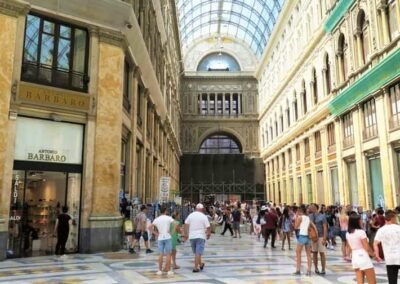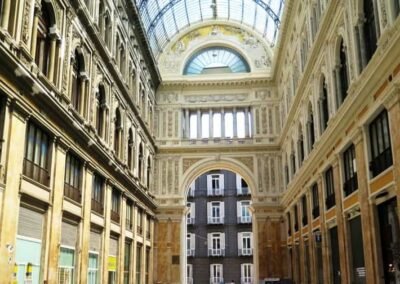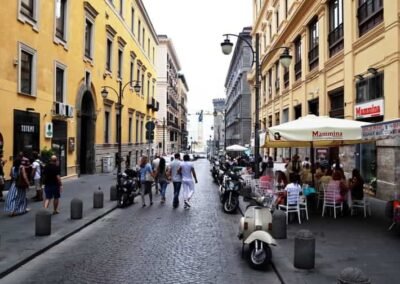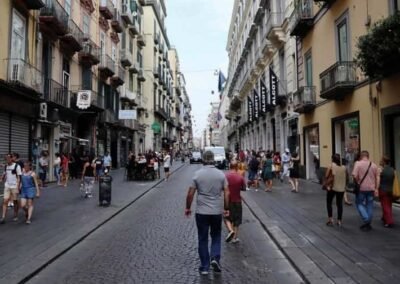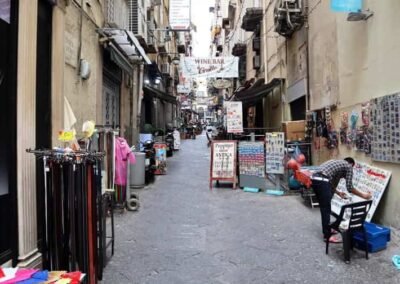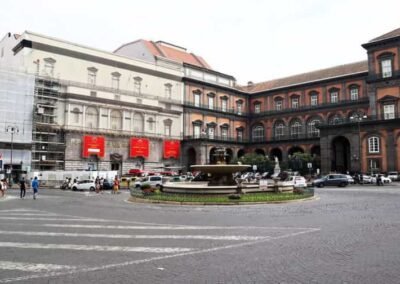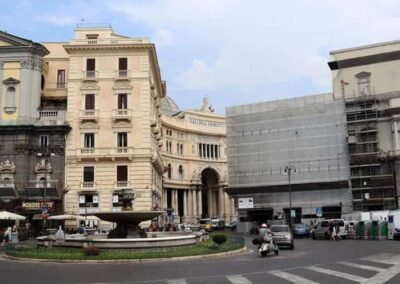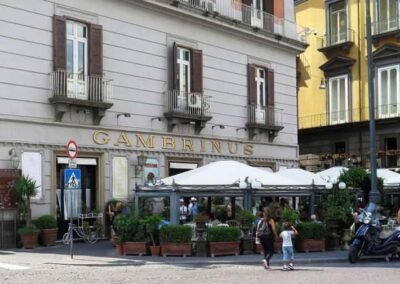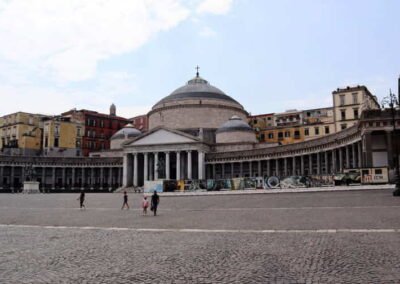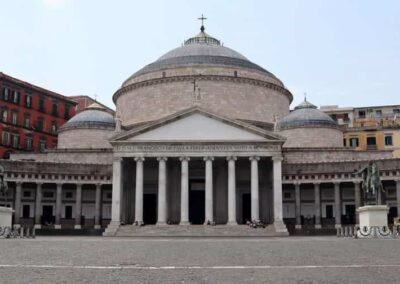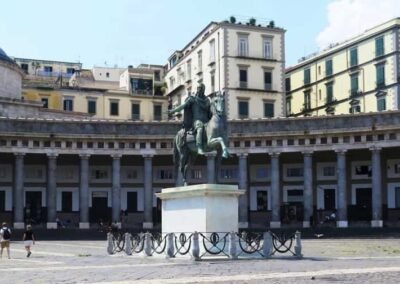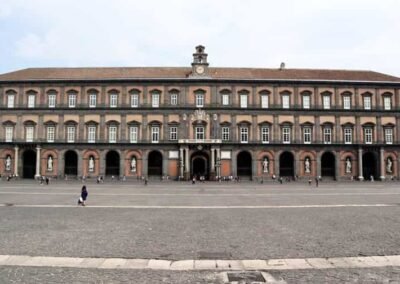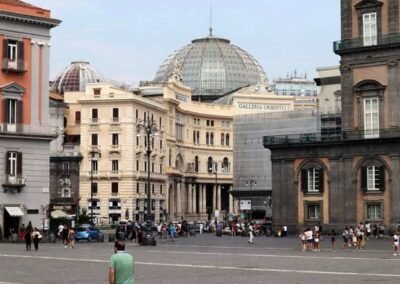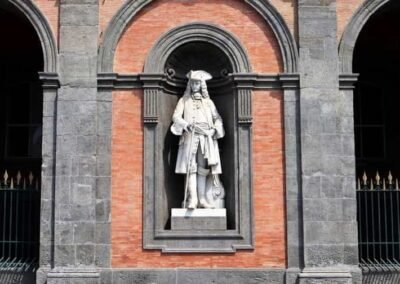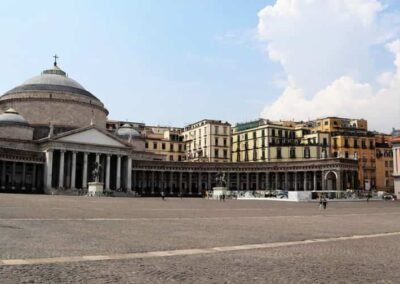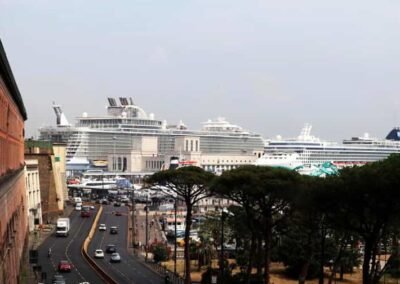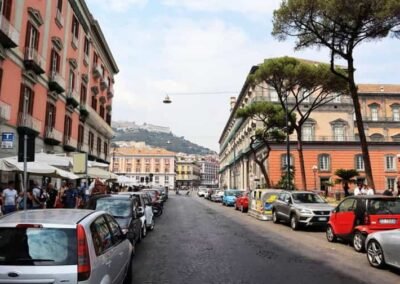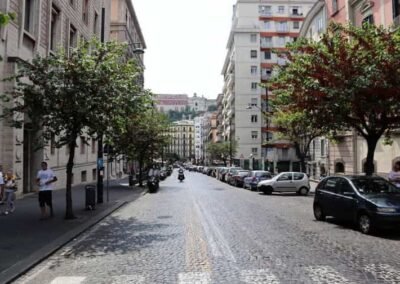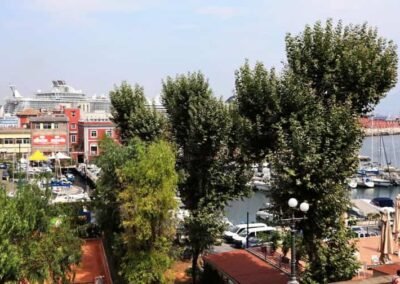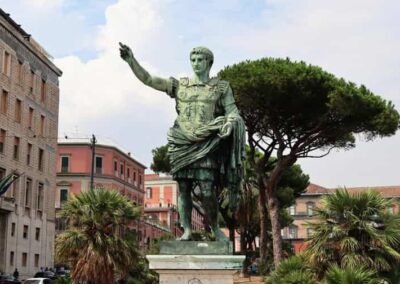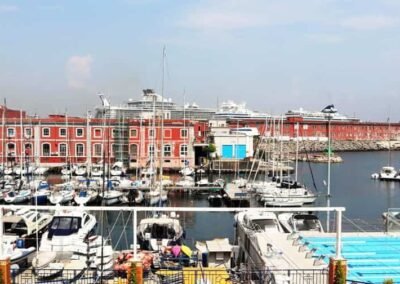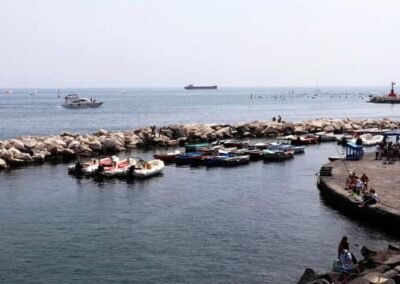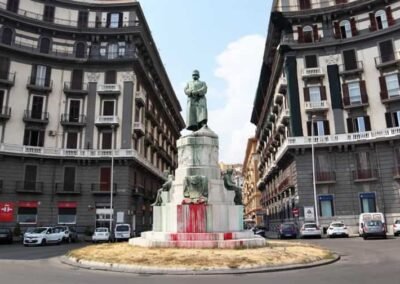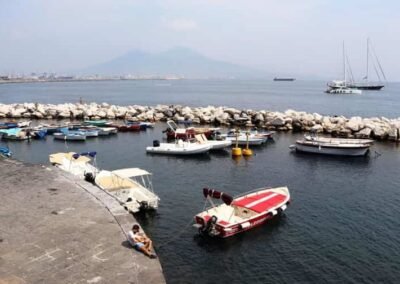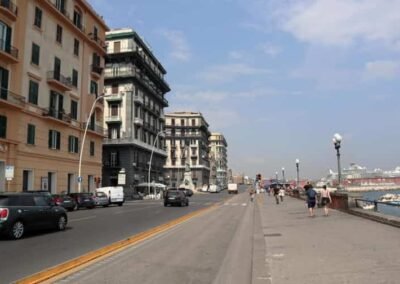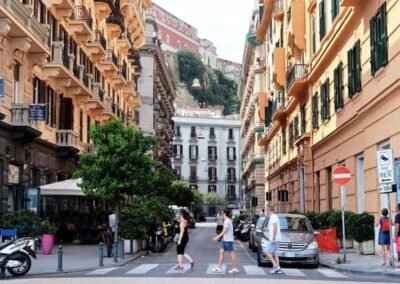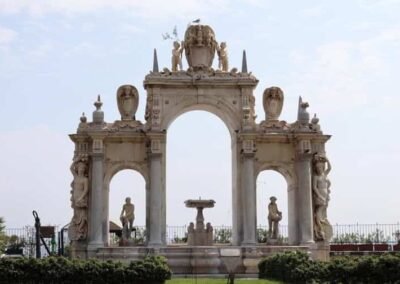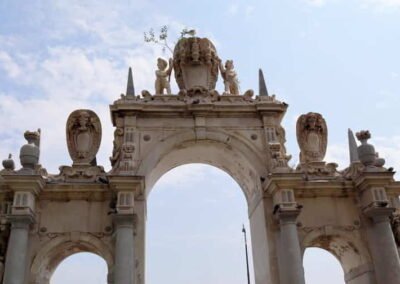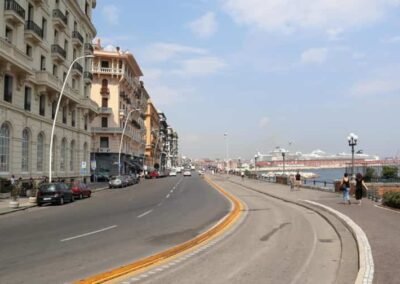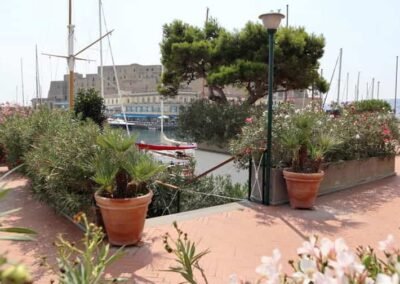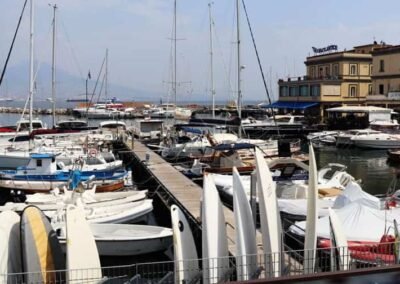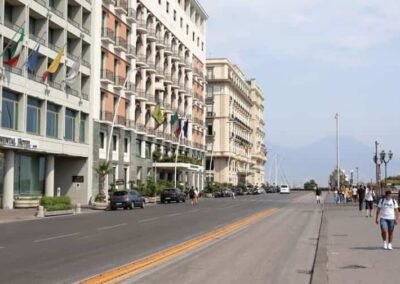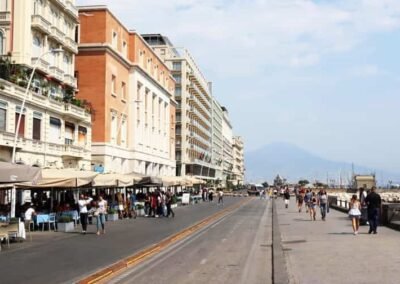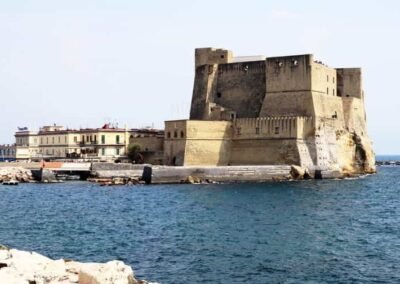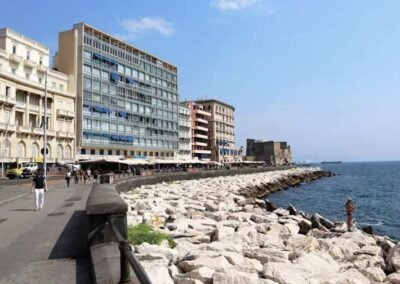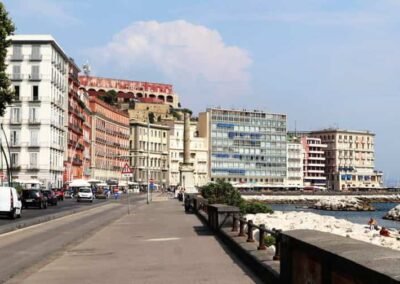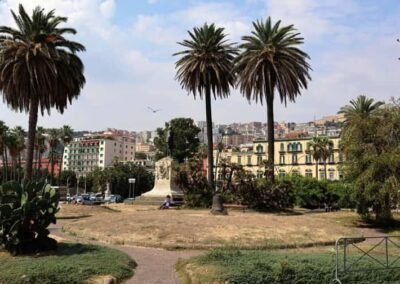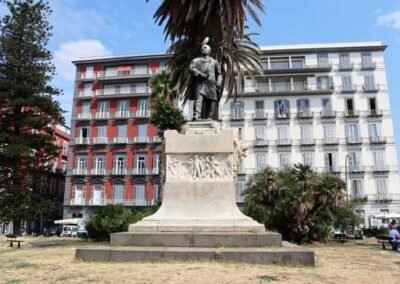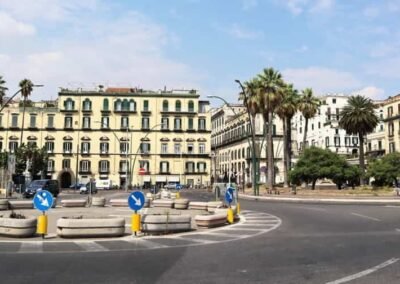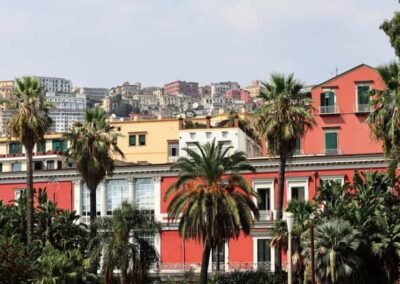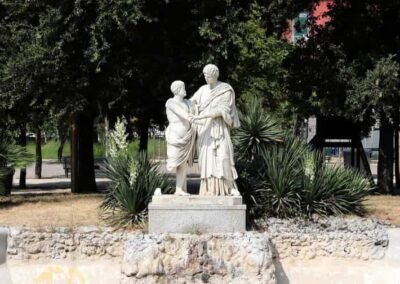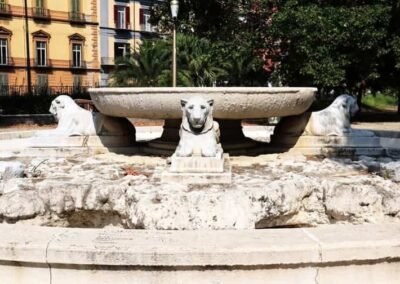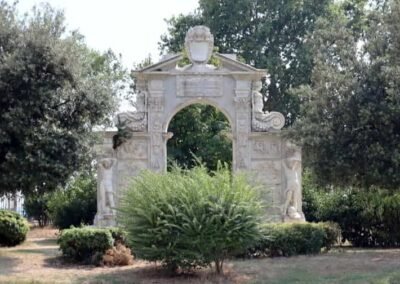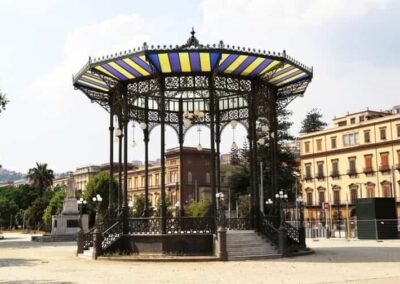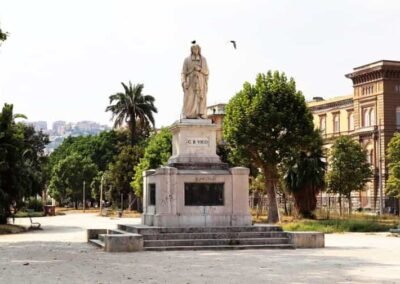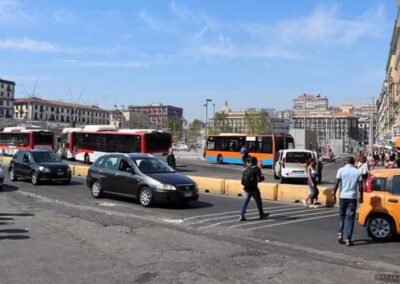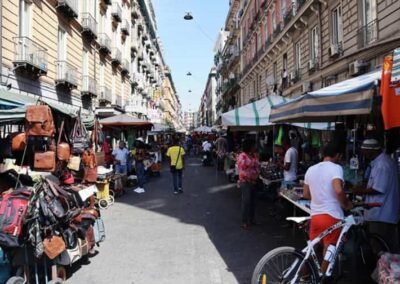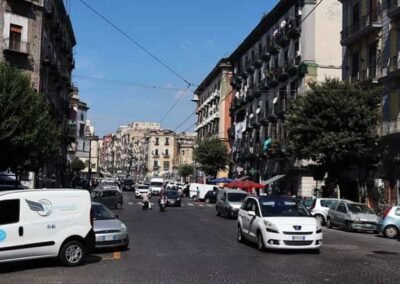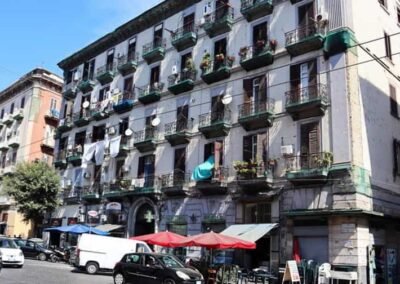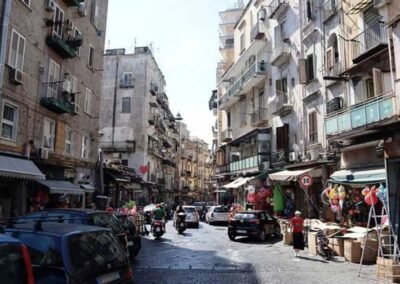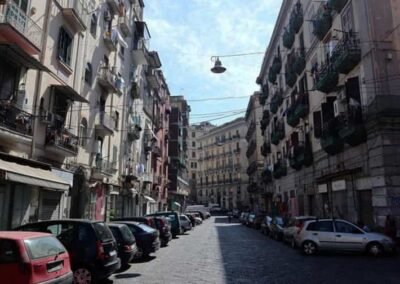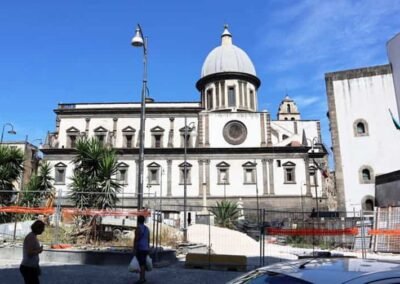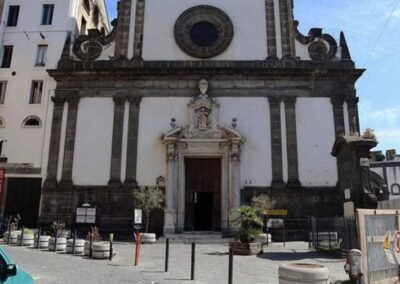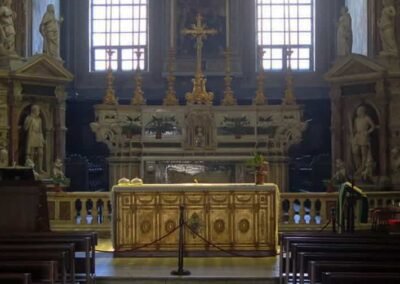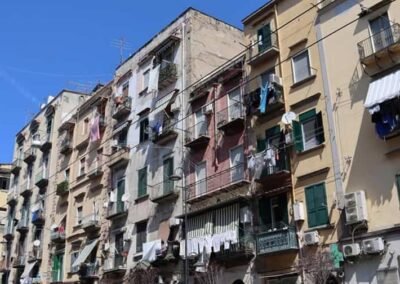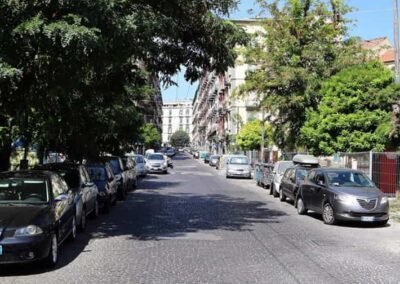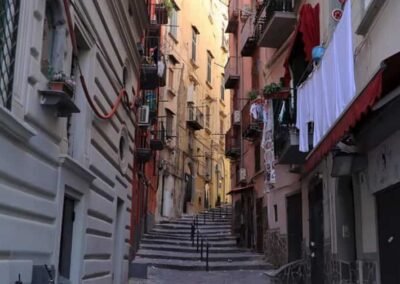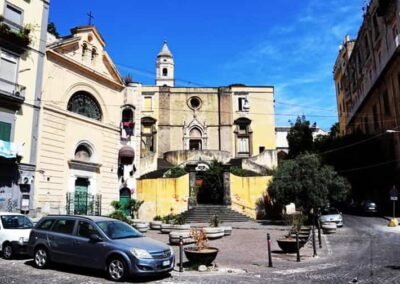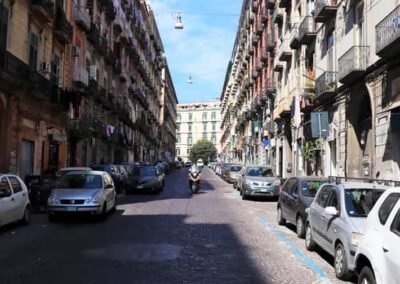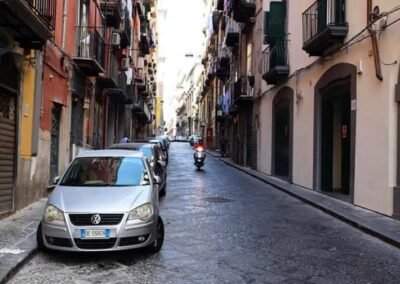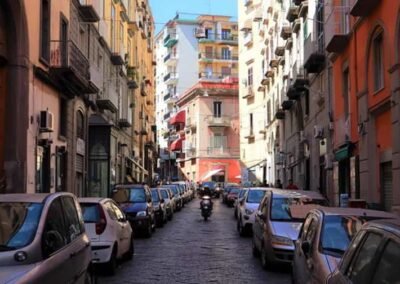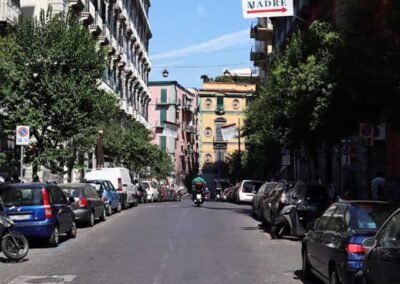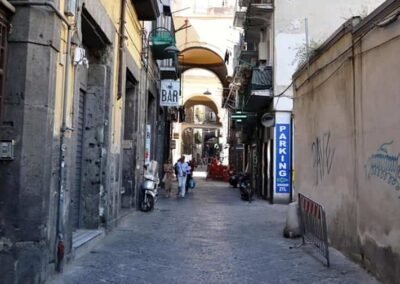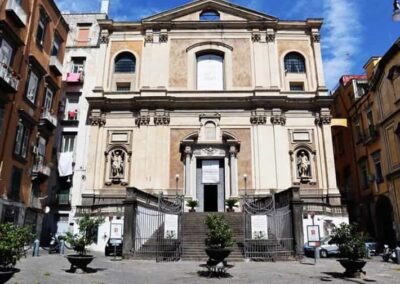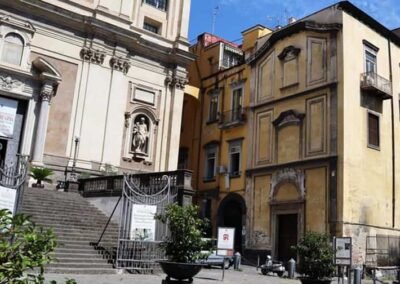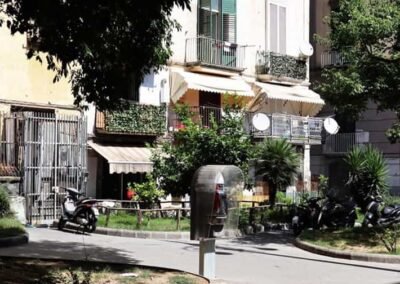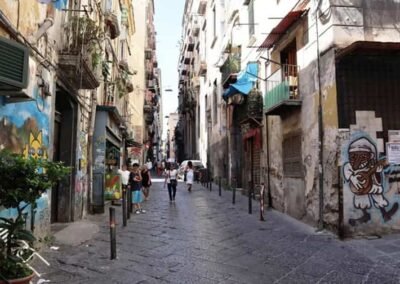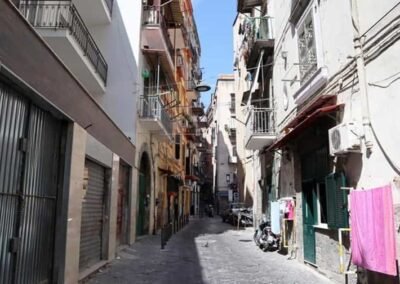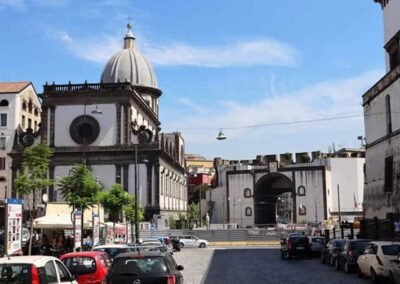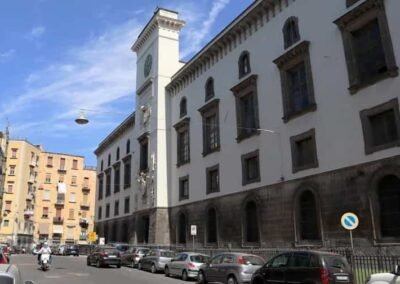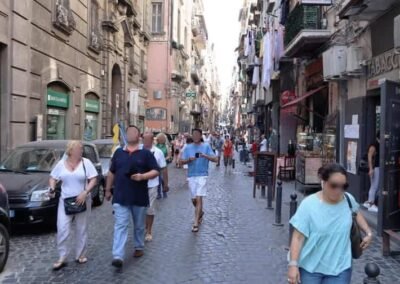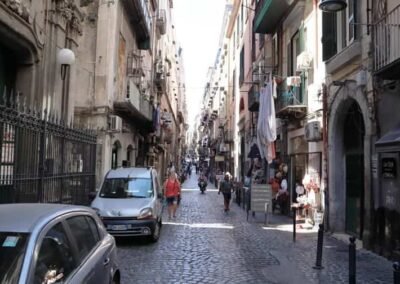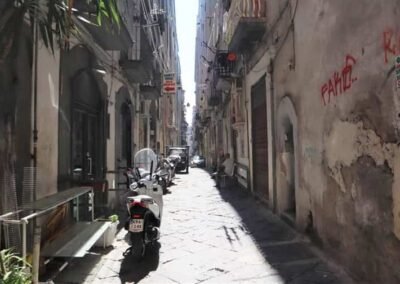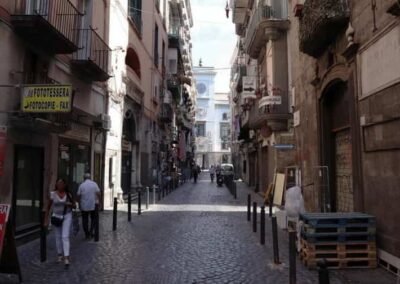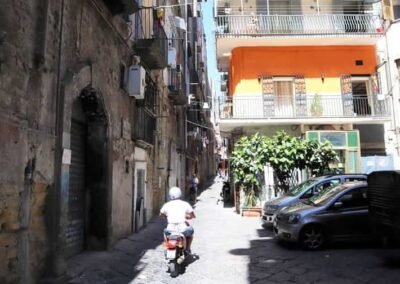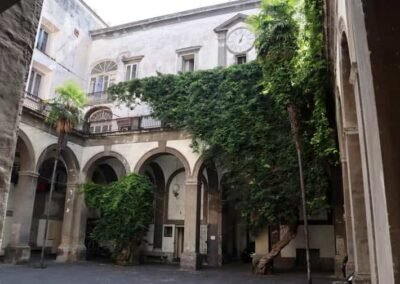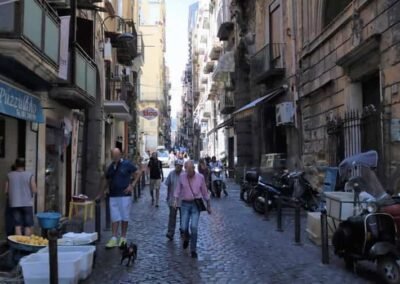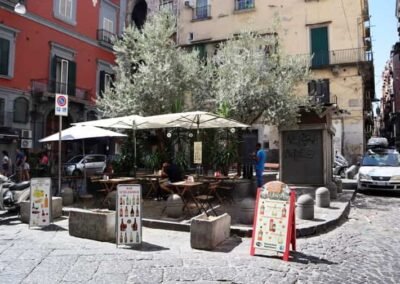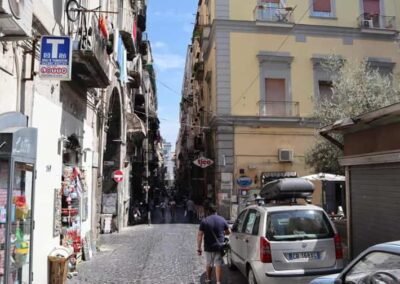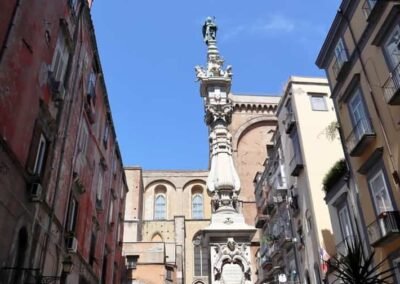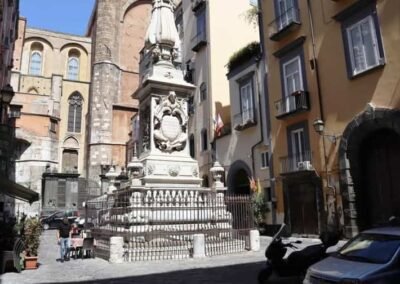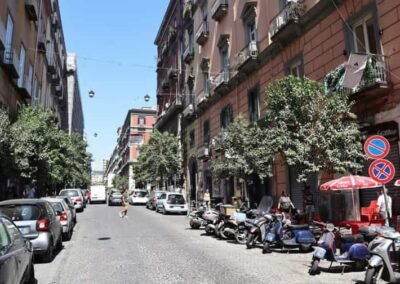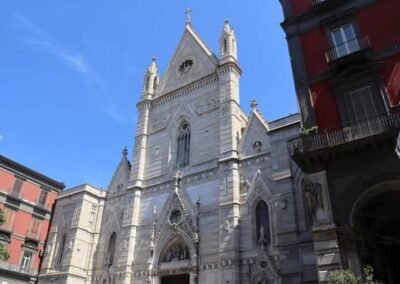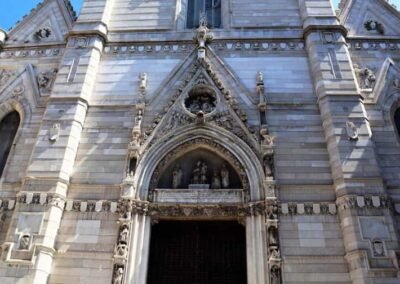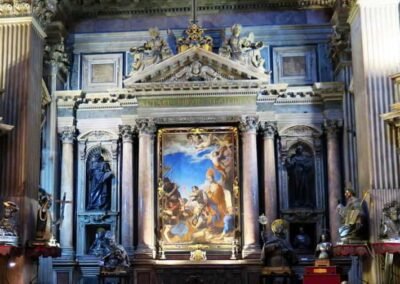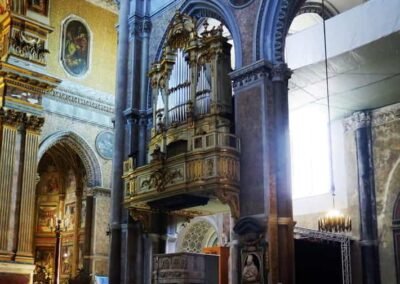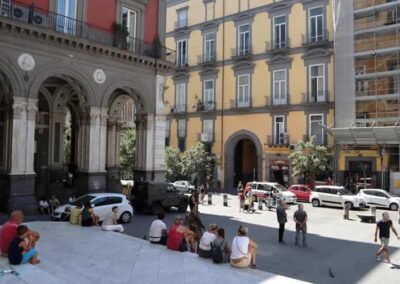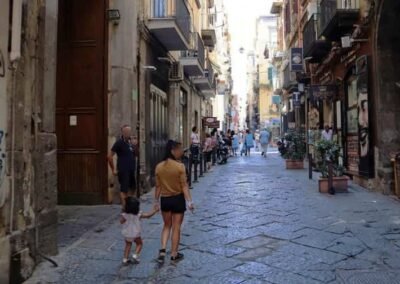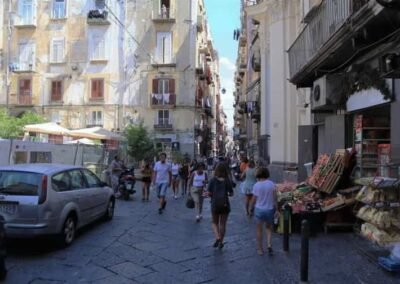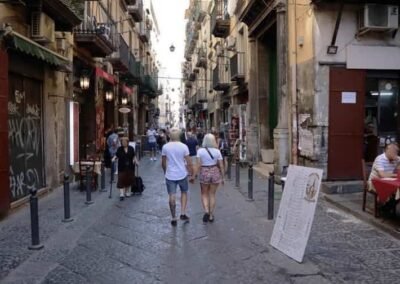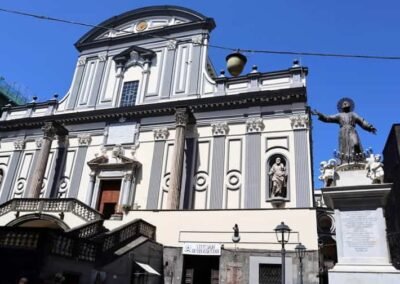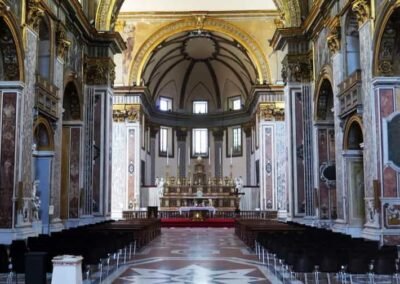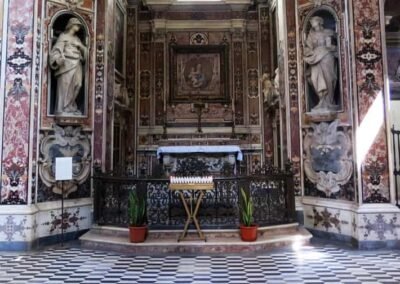HOME
THE REGIONS OF ITALY
PLACES IN ITALY
Italy in Photos
Piazza Trieste e Trento, 80132 Napoli, Italy (August 2019)
Naples
Naples, the third-largest city in Italy and the capital of the Campania region, is a vibrant metropolis steeped in history, culture, and a unique sense of energy that sets it apart from other Italian cities. Situated along the beautiful Bay of Naples, with the imposing Mount Vesuvius as its backdrop, Naples is a city of contrasts, where ancient traditions blend seamlessly with modern life, creating a dynamic and intriguing destination. Naples boasts a history that dates back over 2,800 years, making it one of the oldest continuously inhabited urban areas in the world. Founded by the Greeks as Neapolis (meaning “new city”) in the 8th century BC, it later became an important part of the Roman Empire. The city’s strategic location on the Mediterranean made it a key centre for trade, culture, and political power throughout antiquity. Over the centuries, Naples has been influenced by a variety of cultures, including the Byzantines, Normans, Spanish, and French, all of which have left their mark on the city’s arch
Naples is a treasure trove of cultural and artistic heritage, much of which is concentrated in its historic centre, a UNESCO World Heritage site. The narrow, winding streets of the centro storico are lined with ancient churches, palaces, and bustling markets, offering a glimpse into the city’s layered history. The Spaccanapoli, a long, narrow street that cuts through the heart of the historic centre, is particularly famous for its vibrant atmosphere and historic significance. Here, visitors can explore important landmarks such as the Gothic Cathedral of Naples (Duomo di Napoli), which houses the relics of San Gennaro, the city’s patron saint, and the Church of Santa Chiara with its beautiful cloister adorned with colourful majolica tiles. Art enthusiasts will find Naples to be a paradise, as the city is home to some of Italy’s most important museums and art collections. The Museo Archeologico Nazionale di Napoli (National Archaeological Museum) is one of the most renowned in the world, housing a vast collection of artifacts from Pompeii and Herculaneum, as well as classical sculptures and mosaics. The Capodimonte Museum and the Palazzo Reale are also must-see attractions, featuring works by Caravaggio, Titian, and other masters of the Renaissance and Baroque periods.
Naples is often considered the culinary capital of Italy, particularly known as the birthplace of pizza. The city’s pizzerias, many of which have been operating for generations, are famous for their Neapolitan-style pizza, characterized by a soft, chewy crust, fresh tomatoes, mozzarella, and basil. Beyond pizza, Naples offers a rich and diverse culinary scene that reflects its history and coastal location. From fresh seafood dishes like spaghetti alle vongole (spaghetti with clams) to traditional pastries such as sfogliatella and babà, the city’s cuisine is a feast for the senses. What truly sets Naples apart is its lively, chaotic energy and the warmth of its people. The Neapolitans, known for their passion and resilience, infuse the city with a vibrant spirit that is palpable in its streets, markets, and piazzas. Life in Naples is lived outdoors, and the city’s many squares and cafés are always buzzing with activity, from the morning rush for espresso to the evening passeggiata (stroll). The city’s relationship with its surroundings is equally dynamic. The Bay of Naples offers stunning views and access to the islands of Capri, Ischia, and Procida, each a short ferry ride away. Meanwhile, the looming presence of Mount Vesuvius is a constant reminder of the region’s volatile history, with the ruins of Pompeii and Herculaneum serving as poignant historical sites. Naples is a city that defies easy categorization. It is a place where history and modernity collide, where the grandeur of ancient architecture meets the gritty, vibrant life of a bustling metropolis. Visitors to Naples are often struck by the city’s contrasts: the opulence of its churches and palaces against the backdrop of its bustling streets, the beauty of its coastal views juxtaposed with the ever-present threat of Vesuvius. Yet it is precisely these contrasts that make Naples such a compelling destination. Whether you come for its art, history, cuisine, or simply to experience its unique atmosphere, Naples promises an unforgettable experience steeped in culture, tradition, and life.
Worth a Visit
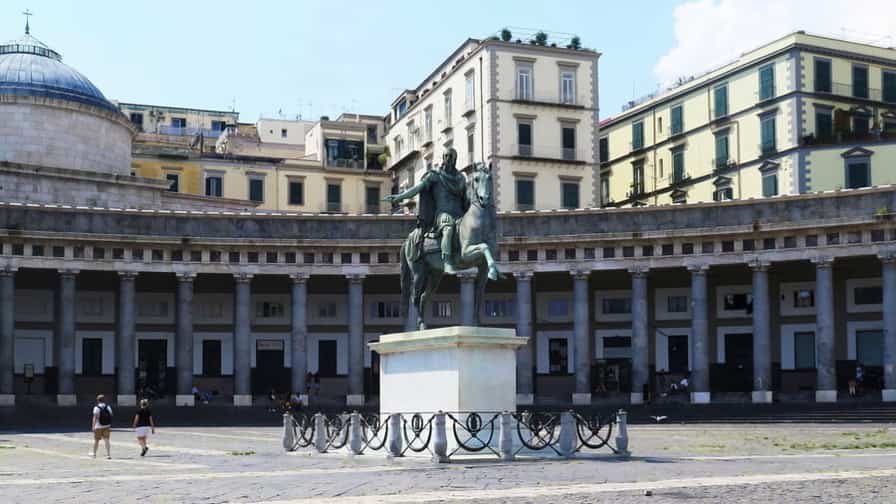
Piazza del Plebiscito is Naples’ most famous and expansive public square, serving as a focal point for both locals and visitors. Located in the heart of the city, near the historic Royal Palace and the Gulf of Naples, the piazza is a stunning example of Neoclassical architecture and urban design. The square is flanked on one side by the grand Basilica of San Francesco di Paola, whose design was inspired by the Pantheon in Rome. The basilica’s massive dome and stately columns create a commanding presence, making it one of the square’s most prominent features. Opposite the basilica stands the Royal Palace, a former residence of Spanish and Bourbon monarchs, which now houses a museum and the National Library of Naples. Piazza del Plebiscito is not only a symbol of Naples’ political and religious history but also a vibrant cultural space. The square often hosts concerts, festivals, and public events, drawing crowds who gather to enjoy its open expanse and panoramic views. The equestrian statues of Charles III of Spain and Ferdinand I of the Two Sicilies add to the square’s grandeur, making Piazza del Plebiscito a must-see landmark.
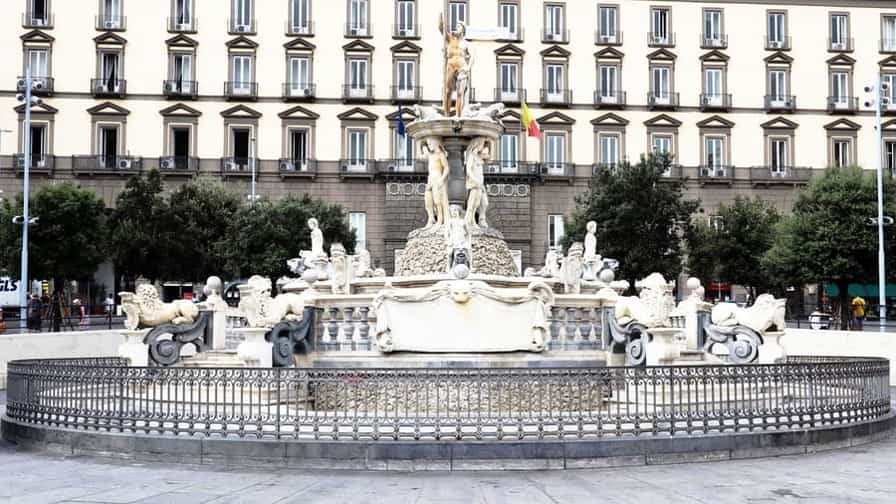
The Fontana della Immacolatella, also known as the Fountain of the Immaculate, is a beautiful Baroque fountain located along the scenic waterfront of Naples, near the bustling Molo Beverello port. This elegant fountain is a masterpiece of Neapolitan artistry, originally designed by the renowned architects Francesco Antonio Picchiatti and later completed by Domenico Antonio Vaccaro in the 17th century. The fountain is named after the Immaculate Conception, a significant religious concept in Catholicism, which is reflected in its intricate design. The central feature of the fountain is a large basin from which water cascades, flanked by two graceful marble lions that spout water into the basin below. Above the basin, a sculpted representation of the Virgin Mary stands serenely, surrounded by angels and ornate decorations that reflect the richness of Baroque style. Fontana della Immacolatella is not only a symbol of religious devotion but also a reminder of Naples’ artistic and cultural heritage. Its location along the promenade offers visitors a perfect spot to enjoy views of the Gulf of Naples and the nearby Castel dell’Ovo
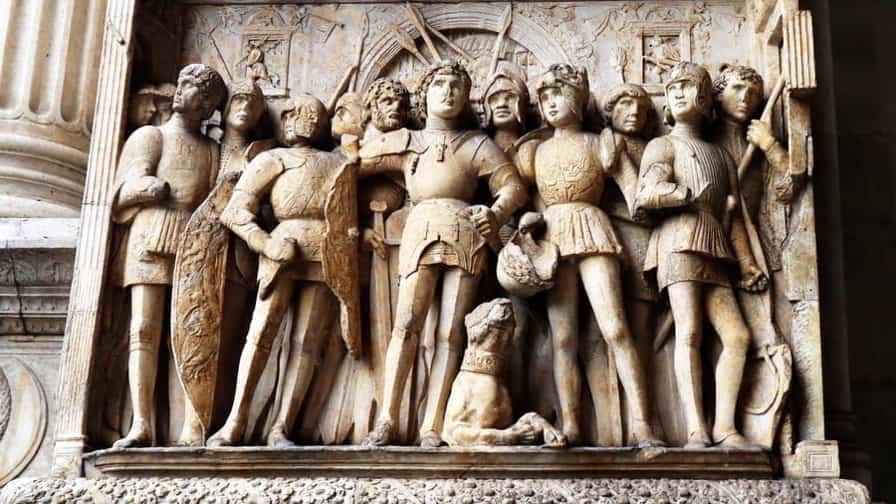
Castel dell’Ovo, or the “Egg Castle,” is one of Naples’ most ancient and storied landmarks, perched dramatically on the small island of Megaride, connected to the mainland by a narrow causeway. Its name, derived from a legend involving the Roman poet Virgil, who supposedly placed a magical egg within its foundations, symbolizes the castle’s enduring strength, according to the myth, the castle and the city would fall if the egg were ever broken. The castle’s history dates to the 6th century BCE, when Greek colonists established a fortified settlement on the island. Over the centuries, it has been expanded and modified by various rulers, including the Romans, Normans, and Aragonese, each leaving their architectural mark on the structure. Today, Castel dell’Ovo is a blend of medieval and Renaissance elements, characterized by its formidable walls, towers, and stunning views of the Gulf of Naples and Mount Vesuvius. Visitors can explore the castle’s interior, which includes ancient halls, courtyards, and the Church of the Savior.
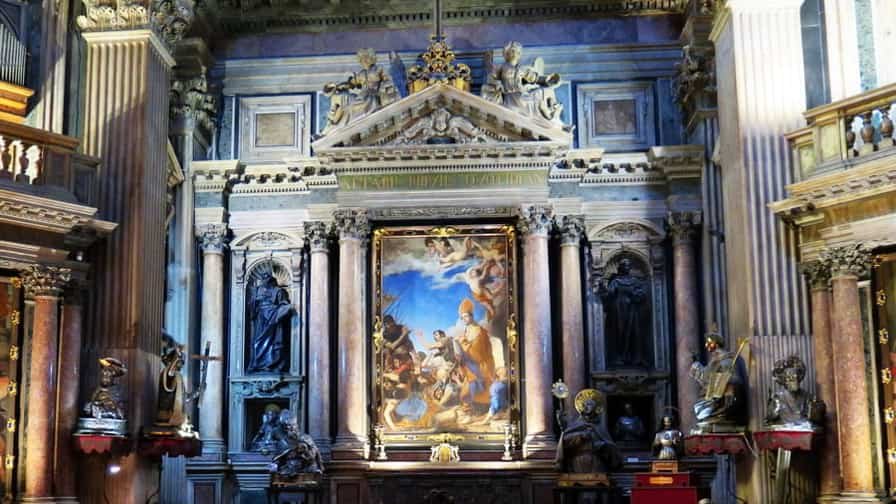
The Cattedrale di San Gennaro, also known as the Naples Cathedral or Duomo di Napoli, is one of the city’s most significant religious and architectural landmarks. Dedicated to San Gennaro (Saint Januarius), the patron saint of Naples, the cathedral is a symbol of the city’s deep spiritual heritage and devotion. Constructed between the 13th and 14th centuries, the cathedral showcases a blend of Gothic, Renaissance, and Baroque architectural styles, reflecting the various periods of its construction and renovation. The exterior features a striking Gothic façade, while the interior is richly adorned with frescoes, sculptures, and intricate marble work, creating an atmosphere of grandeur and reverence. One of the cathedral’s most revered spaces is the Cappella del Tesoro di San Gennaro (Chapel of the Treasure of Saint Januarius), where the relics of the saint, including his blood, are kept. The Miracle of San Gennaro, where the saint’s blood is said to liquefy, occurs here three times a year and is a major event for the peopl
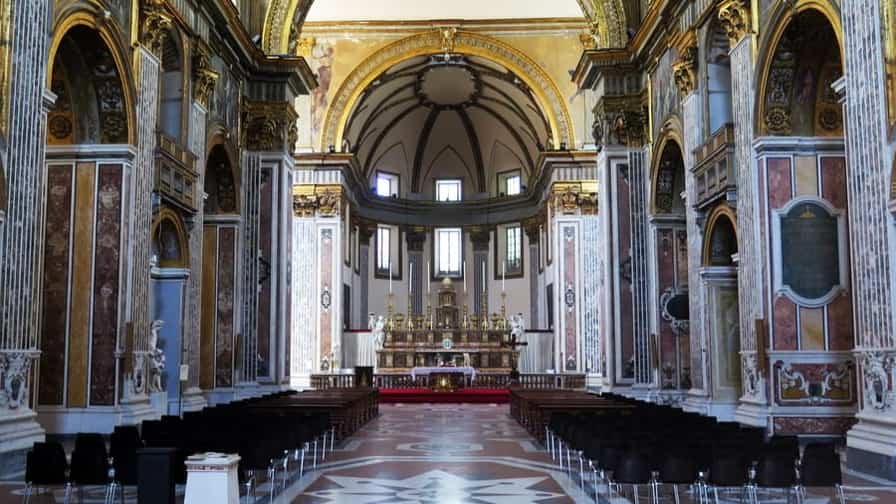
The Basilica di San Paolo Maggiore is a stunning example of Baroque architecture and one of Naples’ most historically significant churches. Located in the heart of the city, near Piazza San Gaetano, the basilica stands on the site of an ancient Roman temple dedicated to the Dioscuri, Castor and Pollux. This rich history is evident in the church’s design, which incorporates remnants of the original Roman structure, including two towering Corinthian columns that grace the facade. Constructed in the late 16th century by the Theatine Order, the basilica is renowned for its lavish Baroque interior, which features intricate stucco work, gilded details, and a stunning frescoed ceiling by the artist Francesco Solimena. The church’s layout is a Latin cross with a central nave flanked by side chapels, each adorned with works of art by prominent Neapolitan artists. One of the basilica’s most remarkable features is the Chapel of San Gaetano Thiene, the co-founder of the Theatine Order, whose relics are housed in an ornate reliquary.
Photo Gallery of Walk 1 – Piazza Giuseppe Garibaldi to Piazzetta Duca D’Aosta
Approximately 3.09 km – 1.92 mile
The walk starts in Piazza Giuseppe Garibaldi – Corso Umberto I – Via Antonio Tari – Corso Umberto I – Monumento a Vittorio Emanuele II – Via Cardinale Guglielmo Sanfelice – Piazza Municipio – Fountain of Neptune, Piazza Municipio – Strada senza nome – Via Vittorio Emanuele III – Castel Nuovo, Via Vittorio Emanuele III – Largo Castello, Piazza Municipio – Via San Carlo – Galleria Umberto I, Via San Carlo – Via Santa Brigida – Via Toledo – Vico D’Afflitto – Via Toledo – Via Trinità degli Spagnoli, – Via Toledo – Piazzetta Duca D’Aosta
Photo Gallery of Walk 2 – Piazza Trieste e Trento to Via Nazario Sauro
Approximately 1.20 km – 075 miles
The walk starts in Piazza Trieste e Trento – Piazza del Plebiscito – Via Cesario Console – Via Santa Lucia – Via Cesario Console – Statua di Augusto, Via Cesario Console – Via Ammiraglio Ferdinando Acton – Via Nazario Sauro – Statua di Umberto I, Via Nazario Sauro – Via Nazario Sauro – Via Palepoli – Via Nazario Sauro – Fontana della Immacolatella, Via Nazario Sauro – Via Nazario Sauro
Photo Gallery of Walk 3 – Via Partenope to Monumento a Giambattista Vico, Giardino Villa Comunale
Approximately 1.88 km – 1.17 miles
The walk starts in Via Partenope – Passaggio Castel dell’Ovo – Via Partenope – Piazza Vittoria – Monumento a Nicola Amore, Piazza Vittoria – Piazza Vittoria – Giardino Villa Comunale – Cassa Armonica, Giardino Villa Comunale – Monumento a Giambattista Vico, Giardino Villa Comunale
Photo Gallery of Walk 4 – Piazza Giuseppe Garibaldi to Piazza Enrico de Nicola
Approximately 2.72 km – 1.69 miles
The walk starts in Piazza Giuseppe Garibaldi – Via Bologna – Corso Giuseppe Garibaldi – Via Alessandro Poerio – Via Della Maddalena – Via Carriera Grande – Piazza Enrico de Nicola – Chiesa di Santa Caterina a Formiello, Piazza Enrico de Nicola – Via Carbonara – Gradini SS. Apostoli – Via Carbonara – Via Domenico Cirillo – Via Luigi Settembrini – Via Duomo – Via San Giuseppe dei Ruffi – Vico S. Petrillo – Str. dell’Anticaglia – Via Donnaregina – Via SS. Apostoli – Oronzio Costa – Piazza Enrico de Nicola
Photo Gallery of Walk 5 – Via Concezio Muzy to Basilica di San Paolo Maggiore, Piazza S.
Approximately 0.76 km – 0.47 miles
The walk starts in Via Concezio Muzy – Via dei Tribunali – Via S. Nicola dei Caserti – Via dei Tribunali – Vico S. Maria Ad Agnone – Via dei Tribunali – Piazzetta Sedil Capuano – Via dei Tribunali – Obelisco di San Gennaro, Piazza Cardinale Sisto Riario Sforza – Via dei Tribunali – Via Duomo – Cattedrale di San Gennaro, Via Duomo – Via Duomo – Via dei Tribunali – Piazza Gerolomini – Via dei Tribunali – Piazza S. Gaetano – Basilica di San Paolo Maggiore, Piazza S. Gaetano
COPYRIGHT © 2018-2025 ITALY IN PHOTOS - ALL RIGHTS RESERVED
